317. At the time frame of rongorongo (assumed by me to be 1842 AD) the distance down to the timeframe of the Bull (Hyadum II) was 64 precessional days, but we could anticipate the Long Sandbank with its Crux time piece inserted (intrometida)

to have stood at the solstice when time began:

... Punarvasu is one of the twenty-seven (or twenty-eight) zodiacal constellations in the Indian system of Nakshatras. In each of the Nakshatras there is a 'yoga', a key star that marks a station taken by the moon in its monthly (twenty-seven- or twenty-eight-day course) through the stars. (The sidereal period of the moon, twenty-seven days and a fraction [14 * 27 = 378, synodic cycle of Saturn, and 14 * 28 = 392, number of glyphs on side a of the C tablet], should be distinguished from the synodic, or phase-shift period of 29.5 days, which is the ultimate antecedent of our month.) In ancient times the priest-astronomers (Brahmans) determined the recurrence of the solstices and equinoxes by the use of the gnomon. Later they developed the Nakshatra system of star reference to determine the recurrence of the seasons, much as the Greeks used the heliacal rising of some star for the same purpose ...
In which case we should add about a month (perhaps ideally 203 - 9 * 19 = 32 days) in order to find the corresponding stars. 71 * (64 + 32) = 6816 (= 213 * 32) = 1842 AD + 4974 BC.
| JULY 21 (202) |
7-22 |
23 |
24 (*125) |
25 (206) |
 |
 |
 |
 |
 |
| Ga5-12 |
Ga5-13 (123) |
Ga5-14 |
Ga5-15 |
Ga5-16 |
| CHANG SHA (Long Sand-bank) = ζ Corvi (186.3) |
INTROMETIDA (Inserted) = ε Crucis (187.4), ACRUX = α Crucis (187.5) |
γ Com. Berenicis (188.0), σ Centauri (188.1), ALGORAB = δ Corvi (188.5), GACRUX = γ Crucis (188.7) |
γ Muscae (189.0), AVIS SATYRA (Bird of the Satyrs) = η Corvi (189.3), ASTERION (Starry) = β Canum Ven. (189.5), KRAZ = β Corvi, κ Draconis (189.7) |
α Muscae (190.2), τ Centauri (190.5), χ Virginis (190.7)
ALDERAMIN (α Cephei)
|
| Sept 23 |
24 (*187) |
25 (268) |
26 |
27 |
| °Sept 19 |
20 (*183) |
21 (264) |
EQUINOX |
23 |
| 'Aug 27 |
28 (240) |
29 (*161) |
30 |
31 |
| "Aug 13 |
14 (*146 = 2 / 5 * 365) |
Hora Iti 15 (227) |
16 |
17 |

... After the great flood had at long last receded, Raven had gorged himself on the delicacies left by the receding water, so for once, perhaps the first time in his life, he wasn't hungry. But his other appetites, his curiosity and the unquenchable itch to meddle and provoke things, to play tricks on the world and its creatures, these remained unsatisfied. Raven gazed up and down the beach. It was pretty, but lifeless. There was no one about to upset, or play tricks upon. Raven sighed. He crossed his wings behind him and strutted up and down the sand, his shiny head cocked, his sharp eyes and ears alert for any unusual sight or sound. The mountains and the sea, the sky now ablaze with the sun by day and the moon and stars he had placed there, it was all pretty, but lifeless. Finally Raven cried out to the empty sky with a loud exasperated cry. And before the echoes of his cry faded from the shore, he heard a muffled squeak. He looked up and down the beach for its source and saw nothing. He strutted back and and forth, once, twice, three times and still saw nothing. Then he spied a flash of white in the sand. There, half buried in the sand was a giant clamshell. As his shadow fell upon it, he heard another muffled squeak. Peering down into the opening between the halves of the shell, he saw it was full of tiny creatures, cowering in fear at his shadow ... |
| CLOSE TO THE FULL MOON: |
| JAN 20 |
21 (*306) |
22 |
23 (388) |
24 |
|
OROMANGA |
| no star listed (4) |
ANKAA = α Phoenicis, κ Phoenicis (5.0)
ALPHARD (α Hydrae)
|
λ Phoenicis (6.3), β Tucanae (6.4) |
ANDROMEDA GALAXY (M31), π Andromedae (7.7) |
ε Andromedae (8.2),
DELTA = δ Andromedae (8.4), SCHEDIR (Breast) = α Cassiopeiae (8.6), ζ Andromedae, μ Phoenicis (8.9)
*8.4 + *365 -*41.4 = *332 (= 4 * 83) |
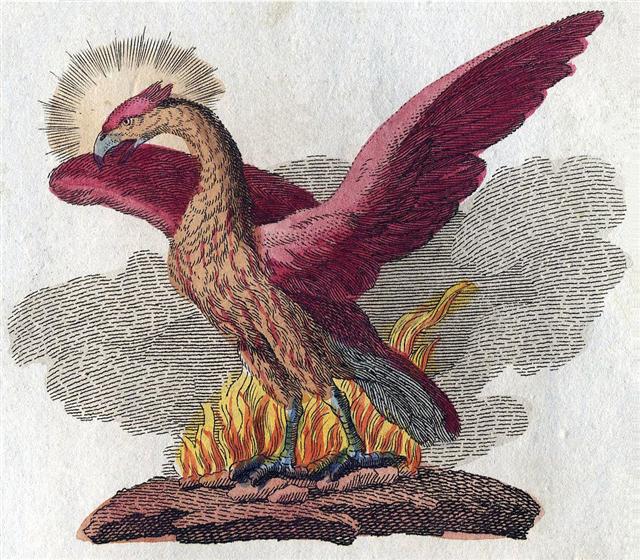 |
| March 25 (84) |
26 |
27 |
28 (*372) |
29 (*8) |
| 0h |
°March 22 |
23 |
24 (*368) |
25 (*4) |
| 'Febr 26 |
27 |
28 (59) |
'March 1 |
2 (*346) |
| "Febr 12 |
13 (*329) |
2-14 (45) |
15 |
Tehetu'upú 16 |
|
... She planted her potatoes 7 in a row, placing her foot in front of her as a measure from one potato to the next. Then she marked the place with a bean - which would also give nourishment to the surrounding potatoes. Next she changed variety and planted 7 more followed by another bean, and this was the pattern she followed until all her 214 varieties had been put down in their proper places. She had drawn a map which she followed and from where each sort of potato could be located at the proper time for its harvest ...
... The Hawaiian woman who was interviewed chuckled because the assassination of Captain Cook coincided with the day we have named All Hearts' Day - when in February 14 (2-14) the war-god Kuu returned to power ...

|
| JULY 26 |
27 |
28 |
29 (210) |
30 (*131) |
 |
 |
 |
 |
 |
| Ga5-17 |
Ga5-18 (128 = 2 * 64) |
Ga5-19 |
Ga5-20 |
Ga5-21 |
|
Al Áwwā'-11 (The Barker) / Shur-mahrū-shirū-18 (Front or West Shur)
Sombrero Galaxy = M104 Virginis (191.1), ρ Virginis (191.4), PORRIMA = γ Virginis, γ Centauri (191.5) |
ι Crucis (192.2), β Muscae (192.5),
MIMOSA = β Crucis (192.9) |
no star listed (193) |
κ Crucis (194.4), ψ Virginis (194.5), μ Crucis, λ Crucis (194.6), ALIOTH (Fat Tail) = ε Ursae Majoris, ι Oct. (194.8) |
MINELAUVA = δ Virginis (195.1), COR CAROLI = α Canum Ven. (195.3) |
| Sept 28 |
29 (*192) |
30 (273) |
Oct 1 |
2 |
| °Sept 24 |
25 (*188) |
26 |
27 (270) |
28 |
| 'Sept 1 |
2 (*165) |
3 |
4 |
5 (248) |
| "Aug 18 (*150) |
19 (231) |
20 |
Hora Iti 21 |
22 |
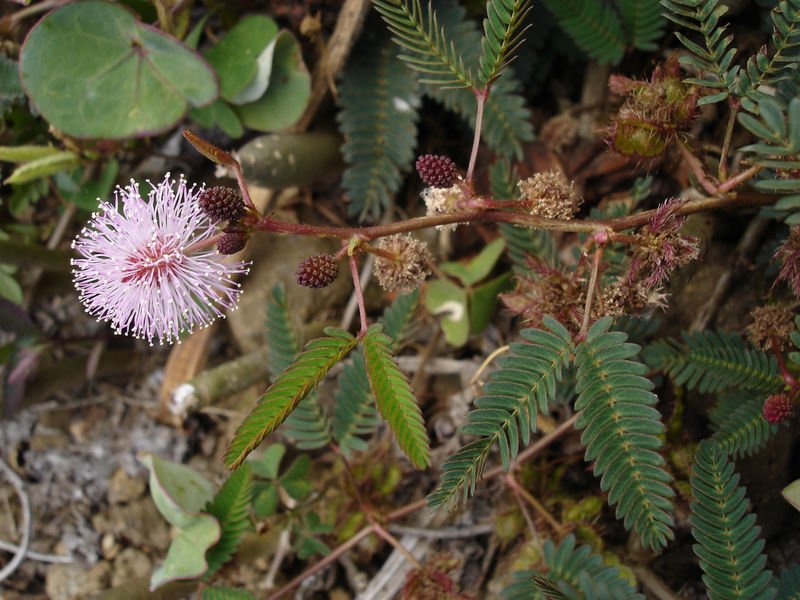 ... The Sensitive plant (Mimosa pudica L.) is a creeping annual or perennial herb often grown for its curiosity value: the compound leaves fold inward and droop when touched, re-opening within minutes. Mimosa pudica is native to Brazil, but is now a pantropical weed. Other names given to this curious plant are Humble plant, TickleMe plant, Shame plant, Sleeping Grass, Prayer plant, Touch-me-not, Makahiya (Philippines, meaning 'shy'), Mori Vivi (West Indies), mate-loi (false death) (Tonga) ... In the evening the leaflets will fold together and the whole leaf droops downward. It then re-opens at sunrise ... Rau hei. 1. Branch of mimosa. 2. Killed enemy. 3. Hanged 'fish'. 'Branche du mimosa (signe de mort), ennemie túe (poisson suspendu)' according to Jaussen. Barthel. |
| CLOSE TO THE FULL MOON: |
| JAN 25 |
26 |
27 (392) |
28 |
29 (*314) |
| OROMANGA |
PAPA O PEA |
|
... He (i.e., Ira) said, 'Let's go! We shall go to Papa O Pea'. They all got up and moved on. On the twentieth day of the month of August ('Hora Iti') they went to Papa O Pea. They all went and came to Papa O Pea, looked around in Papa O Pea, and gave the name 'Papa O Pea A Hau Maka'. They stayed five days in Papa O Pea ...
Pea. (Also peapea): To go away with bits of food or mud sticking to one's face or garments. Vanaga. Peaha, perhaps ... maybe, chance, doubtful; reoreo peaha ... Ma.: pea, perhaps. Peapea, an erasure ... hakapeapea ... Peau, to sweep all away. Ma.: peau, to be turned away. Churchill. Peau, a wave (Sa., To., Fu., Fotuna, Niuē, Mq., Nuguria); Mgv.: peau, peahu, id. Churchill 2.
... But in the fullness of time an obscure instinct led the eldest of them towards the anthill which had been occupied by the Nummo. He wore on his head a head-dress and to protect him from the sun, the wooden bowl he used for his food. He put his two feet into the opening of the anthill, that is of the earth's womb, and sank in slowly as if for a parturition a tergo. The whole of him thus entered into the earth, and his head itself disappeared. But he left on the ground, as evidence of his passage into that world, the bowl which had caught on the edges of the opening. All that remained on the anthill was the round wooden bowl, still bearing traces of the food and the finger-prints of its vanished owner, symbol of his body and of his human nature, as, in the animal world, is the skin which a reptile has shed ...
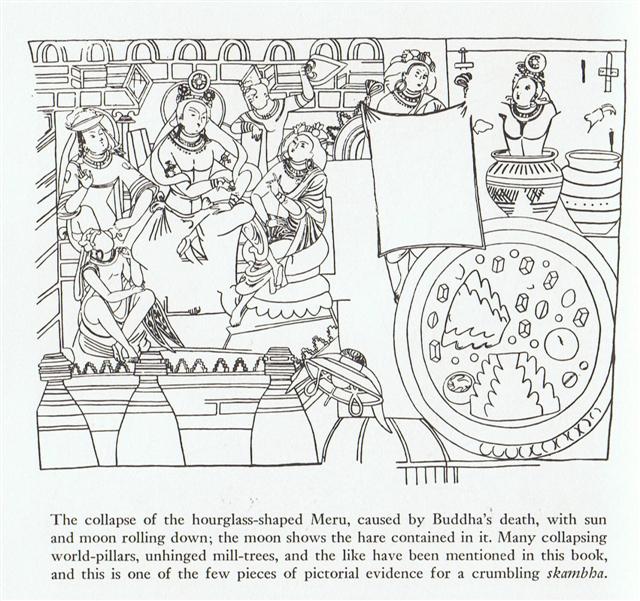 |
| ξ Phoenicis (9.0), ρ Tucanae (9.1), DENEB KAITOS (Tail of the Sea Beast) = β Ceti, η Phoenicis (9.4), AL NITHĀM (String of Pearls) = φ¹ Ceti (9.6) |
ACHIRD (Woman with Luminous Rays) = η Cassiopeiae (10.7) |
Legs-15 (Wolf)
ν Andromedae (11.0), φ² Ceti (11.1), ρ Phoenicis (11.2), η Andromedae (11.4) |
CIH (Whip) = γ Cassiopeiae, λ Tucanae (12.4), φ³ Ceti (12.6), μ Andromedae (12.8) *12.4 + *365 -*41.4 = *336 (= 4 * 84) |
φ4 Ceti (13.2) |
| March 30 |
31 (*375) |
April 1 (91 = 64 + 27) |
2 |
3 |
| °March 26 |
27 |
28 (*372) |
29 (88) |
30 |
| 'March 3 |
4 |
5 (64) |
6 (*350) |
7 |
| "Febr 17 |
18 |
19 (50 = 64 - 14) |
20 (*336 = 48 * 7) |
Tehetu'upú 21 |
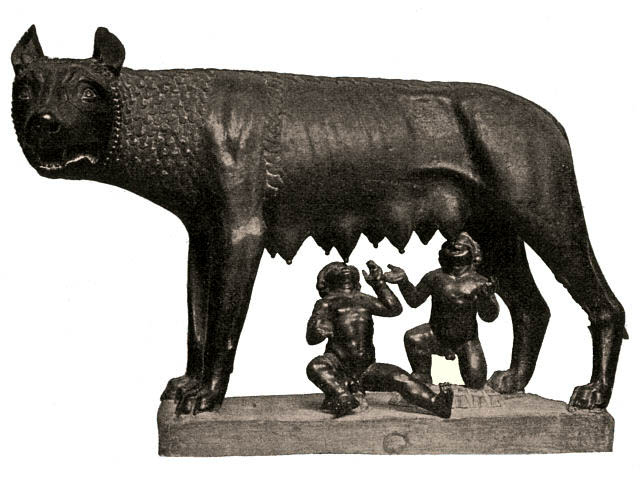 |
| JULY 31 |
AUG 1 |
2 (214) |
3 (*500) |
4 (*136) |
5 |
6 |
 |
 |
 |
 |
 |
 |
 |
| Ga5-22 |
Ga5-23 |
Ga5-24 |
Ga5-25 (135) |
Ga5-26 |
Ga5-27 (→ 364) |
Ga5-28 |
| δ Muscae (196.5) , VINDEMIATRIX (Grape Gatherer) = ε Virginis (196.8) |
13h (197.8)
ξ¹ Centauri (197.1), ξ² Centauri (197.9) |
APAMI-ATSA (Child of Waters) = θ Virginis, ψ Hydrae (198.5),
DIADEM = α Com. Ber. (198.9) |
AL DAFĪRAH (Tuft) = β Com. Ber. (199.4) |
σ Virginis (200.4) |
γ Hydrae (201.0), ι Centauri (201.4) |
Al Simāk-12 (Lofty) / Chitra-14 (Bright One) / Horn-1 (Crocodile) / Sa-Sha-Shirū-20 (Virgin's Girdle) / ANA-ROTO-3 (Middle pillar)
MIZAR = ζ Ursae Majoris (202.4), SPICA = α Virginis, ALCOR = 80 Ursae Majoris (202.7)
SADALMELIK (α Aquarii)
*161 = *202.4 - 41.4 |
 |
| Oct 3 |
4 |
5 |
6 |
7 (*200) |
8 |
9 (282) |
| °Sept 30 |
°Oct 1 |
2 |
3 (275) |
4 (*196) |
5 |
6 |
| 'Sept 6 |
7 (250) |
8 |
9 |
10 |
11 (364 - 100) |
12 (*175) |
| "Aug 23 |
24 (236 = 472 / 2) |
25 |
Hora Iti 26 |
27 |
28 (240) |
Hora Iti 29 |
|
Ahu. 1. Funerary monument with niches holding the skeletons of the dead. 2. Generic term for a grave, a tomb merely enclosed with stones. 3. Stone platform, with or without graves. 4. Elevated seat, throne. 5. Swollen; to swell up: ku-ahu-á tooku va'e, my foot is swollen; ananake te raá e-tagi-era te ûka riva mo toona matu'a ka-ahu ahu-ró te mata, every day the daughter cried for her parents until her eyes were quite swollen. Vanaga.
1. To transfer, to transplant, to take up by the roots. 2. To puff up, to swell, a swelling, protuberance; gutu ahu, swollen lips; ahuahu, to swell, plump, elephantiasis, dropsy; ahuahu pupuhi, amplitude; manava ahuahu, indigestion. 3. Paralysis. 4. A carved god of dancing, brought forth only on rare occasions and held of great potency. Ahuahu, inflammation. Ahukarukaru (ahu 2 - karukaru), dropsy. Churchill. |
Ahu Akapu
(2 days) |
Aka. 1. Anchor: he-hoa te aka, to drop anchor. 2. Root of certain plants (banana tree, taro, sugar-cane). 3. To be paralyzed by surprise. Vanaga.
1. Root; aka totoro, to take root. P Pau., Mq.: aka, root. Ta.: aa, id. 2. (āka) anchor. 3. Causative (haka). Churchill. |
Pu Pakakina
(1 month) |
| CLOSE TO THE FULL MOON: |
| JAN 30 |
31 (396) |
FEBR 1 |
2 |
3 |
4 (*320) |
5 (36) |
| PAPA O PEA |
... On the twenty-sixth day of the month of August ('Hora Iti') they went from Papa O Pea to Ahu Akapu. They all went and reached Ahu Akapu. They looked around and gave the name 'Ahu Akapu A Hau Maka'. They also saw (all of) Te Pito O Te Kainga, looked around, and gave (the whole island) the name 'Te Pito O Te Kainga A Hau Maka'. [E:31] They made camp and rested at Ahu Akapu for two days. On the twenty-ninth day of the month of August ('Hora Iti') they went to Pu Pakakina. They arrived, remained there, and gave the name 'Pu Pakakina A Ira'. They remained one month in Pu Pakakina. |
| no star listed (14) |
1h (15.2)
β Phoenicis (15.1), υ Phoenicis, ι Tu canae (15.6), η Ceti, ζ Phoenicis (15.7) |
Al Batn Al Hūt-26 (Belly of the Fish) / Revati-28 (Prosperous) / 1-iku (Field Measure)
MIRACH (Girdle) = β Andromedae, KEUN MAN MUN (Camp's South Gate) = φ Andromedae (16.0), ANUNITUM = τ Piscium (16.5), REVATI (Abundant) = ζ Piscium (16.9)
REGULUS (α Leonis)
|
ν Phoenicis (17.4), κ Tucanae (17.6) |
no star listed (18) |
ADHIL (Garment's Train) = ξ Andromedae (19.3), θ Ceti (19.7) |
KSORA (Knee) = δ Cassiopeiae (20.1), ω Andromedae (20.6), γ Phoenicis (20.8) |
| April 4 |
5 (460 = 396 + 64) |
6 |
7 |
8 (13 * 29½ - ½) |
9 (*384) |
10 (100) |
| °March 31 |
°April 1 (91) |
2 (*377) |
3 |
4 |
5 (460 = 396 + 64) |
6 (*16) |
| 'March 8 |
9 |
10 (*354 = 6 * 59) |
11 |
12 |
13 (72) |
3-14 |
| Tehetu'upú 22 |
TERMINALIA |
"Febr 24 (420) |
25 |
26 |
27 (*7 * 7 * 7) |
28 (59) |
|
... The leap day was introduced as part of the Julian reform. The day following the Terminalia (February 23) was doubled, forming the bis sextum - literally 'double sixth', since February 24 was 'the sixth day before the Kalends of March' using Roman inclusive counting (March 1 was the 'first day'). Although exceptions exist, the first day of the bis sextum (February 24) was usually regarded as the intercalated or 'bissextile' day since the third century. February 29 came to be regarded as the leap day when the Roman system of numbering days was replaced by sequential numbering in the late Middle Ages ... |
On the other hand, when in the long nights of winter the Sandbank in Corvus returned to visibility 16 days after its close encounter with the Sun this would have marked the day when Spica rose together with the Sun:
| 266 + 96 = 362 |
15 |
282 + 96 = 378 (→ Saturn) |
 |
 |
| Hora Iti 13 (15 * 15) |
Hora Iti 29 (241) |
| Long Sandbank (*186) |
Middle pillar (*202) |
| March 25 (84 = 266 - 182) |
April 10 (100 = 282 - 182) |

... ζ, a 6th-magnitude double, almost on the limit of invisibility, strangely seems to have borne a name in China, - Chang Sha, a Long Sand-bank. Al Bīrūni said that with β, γ, and δ it marked the hind quarters of the monstrous early Lion ...
... Ta'aroa tahi tumu, 'Ta'aroa origl. stock' - most commonly Ta'aroa or Te Tumu - existed before everything except of a rock (Te Papa) which he compressed and begat a daughter (Ahuone) that is Vegetable Mole.*
*Ahuone means 'earth heaped up' - a widespread name for the Polynesian first woman. It sounds as if Cook also heard the term applied to the banks of humus and rotting material on which taro is grown. In the English of his day this was known as 'vegetable mould' ...
| One. One, sand. Oneone (reduplication of oone which see below), dirty, covered in soil, in mud. Vanaga. Oone, ground, soil; mud; dirty, to get dirty. Vanaga. One, sword. (Cf. oe, dorsal fin; àè, sword.) Ta.: óé, sword, lance. Churchill. Oone, sand, clay, dirt, soil, mire, mud, muck, gravel, filth, manure, dust, to dirty; ao oone, shovel; egu oone vehuvehu, mud; moo te oone, shovel; oone hekaheka, mud; puo ei oone, to daub; kerihaga oone, husbandman; oone veriveri, mud; oone no, muck, to dirty, to powder; vai oone, roiled water; oone rari, marsh, swamp; oonea, dirty T; ooneoone, sandy; oonevai, clay T; hakaoone, to pollute, to soil. P Mgv.: one, land in general, earth, soil. Mq.: one, sand, beach. Ta.: one, sand, dust, gravel. Churchill. Miro-oone, model boat made of earth in which the 'boat festivals' used to be celebrated. Vanaga. ... on the first day of the year the natives dress in navy uniforms and performs exercises which imitate the maneuvers of ships' crews ... Métraux. |
| 1. PU MAHORE |
Poko Uri |
Te Manavai |
Te Kioe Uri |
Te Piringa Aniva |
Te Pei |
Te Pou |
8. HUA REVA |
| Akahanga |
10. Hatinga Te Kohe |
Roto Ire Are |
Tama |
One Tea |
14. HANGA TAKAURE |
Poike |
16. PUA KATIKI |
| ST JOHN'S DAY |
JUNE 25 |
26 (177 = 6 * 29 ½) |
27 |
 |
 |
 |
 |
| Ga4-12 |
Ga4-13 (96) |
Ga4-14 |
Ga4-15 |
| p Carinae (159.3) |
φ Hydrae (160.3) |
no star listed (161) |
VATHORZ POSTERIOR = θ Carinae (162.1), PEREGRINI = μ Velorum, η Carinae (162.6) |
| Aug 27 |
28 (240) |
29 (*161) |
30 |
| °Aug 23 |
24 (236) |
25 (*157) |
26 |
| 'July 31 |
'Aug 1 |
2 (214) |
3 (*500) |
| "July 17 |
Anakena 18 |
19 (200) |
20 (*121) |
|
... They made camp and rested at the Bay of Flies for a week (etahi pohitu). On the eighteenth day of the month of July (Anakena) they went on from Hanga Takaure. They climbed uphill, went on, and reached Poike. When they arrived, they looked around and named (the place) 'Poike A Hau Maka'. They climbed up farther to Pua Katiki. When they arrived there, they looked around and named (the place) 'Pua Katiki A Hau Maka' ... |
| CLOSE TO THE FULL MOON: |
|
... That the Sun-gods Dionysus, Apollo and Mithras were all also reputedly born at the Winter solstice is well known, and the Christian Church first fixed the Nativity feast of Jesus Christ at the same season, in the year AD 273. St. Chrysostom, a century later, said that the intention was that 'while the heathen were busied with their profane rites the Christians might perform their holy ones without disturbance', but justified the date as suitable for one who was 'the Sun of Righteousness' ... |
| CHRISTMAS EVE |
DEC 25 |
26 (360) |
27 |
| One Tea |
Hanga Taka-ure |
Poike |
Pua Katiki |
|
... taka-ure basically meant not a horse-fly but the completion of a cycle - through a female agent capable of regenerating (in contrast to man who could not carry any off-spring) ... |
| η Aquarii (342.1), σ Gruis (340.4), SITULA (Water-jar) = κ Aquarii (342.7) |
ε Piscis Austrini (343.5), ο Pegasi, β Gruis (343.8) |
ρ Gruis (344.0), MATAR (Fortunate Rain) = η Pegasi (344.2), η Gruis (344.6), β Oct. (344.7) |
λ Pegasi (345.0), ξ Pegasi (345.1), ε Gruis (345.3), τ Aquarii (345.7), ξ Oct. (345.8), μ Pegasi (345.9) |
| Febr 26 |
27 (*343 = 7 ' 7 * 7) |
28 (59) |
March 1 (425) |
| °Febr 22 |
TERMINALIA |
24 (55) |
25 |
| 'Jan 30 (*315) |
31 |
'Febr 1 (32) |
2 |
| "Jan 16 (*301) |
17 |
18 |
19 (384) |
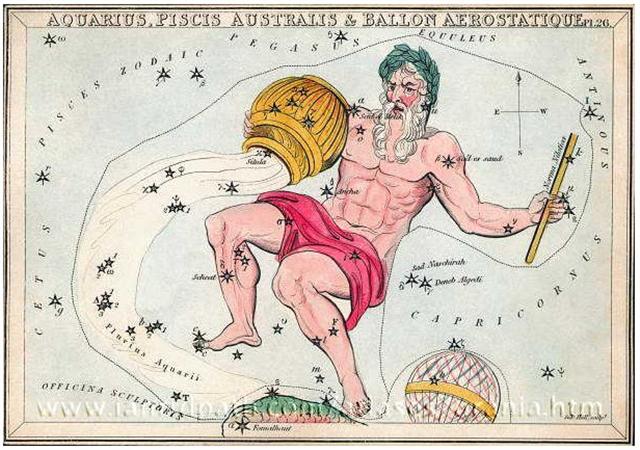
... The Greek lettered κ (Situla) is at the rim of the Urn, not at the top of the Nilometer, where instead there is a Latin letter k. The meaning obviously is for the viewer to connect k with κ, to imagine the Rod inserted into the Urn (Tent) at the K position ... |
The following night could originally have been number 363 when the Sun reached the star 71 (= 26000 / 366) Virginis:
| AUG 7 (219) |
8 (*140 = 365 - 225) |
 |
 |
| Ga5-29 |
Ga5-30 (140) |
| 71 VIRGINIS (203.6) |
no star listed (204) |
|

... Mons Maenalus, at the feet of Boötes, was formed by Hevelius, and published in his Firmamentum Sobiescianum; this title coinciding with those of neighboring stellar groups bearing Arcadian names. It is sometimes, although incorrectly, given as Mons Menelaus, - perhaps, as Smyth suggested, after the Alexandrian astronomer referred to by Ptolemy and Plutarch. The Germans know it as the Berg Menalus; and the Italians as Menalo. Landseer has a striking representation of the Husbandsman, as he styles Boötes, with sickle and staff, standing on this constellation figure. A possible explanation of its origin may be found in what Hewitt writes in his Essays on the Ruling Races of Prehistoric Times:
The Sun-god thence climbed up the mother-mountain of the Kushika race as the constellation Hercules, who is depicted in the old traditional pictorial astronomy as climbing painfully up the hill to reach the constellation of the Tortoise, now called Lyra, and thus attain the polar star Vega, which was the polar star from 10000 to 8000 B.C.
May not this modern companion constellation, Mons Maenalus, be from a recollection of this early Hindu conception of our Hercules transferred to the adjacent Bootes? |
| Oct 10 (101 + 183) |
11 (284 = 364 - 80) |
| °Oct 6 |
7 (280 = 364 - 84) |
| 'Sept 13 (256 = 242 + 14) |
14 (*177 = 365 - 188) |
| Hora Iti 30 (242) |
31 (*163 = 365 - 202) |
| CLOSE TO THE FULL MOON: |
| FEBR 6 (*322) |
7 (403 = 220 + 183) |
| δ Phoenicis (21.5) |
υ Andromedae (22.9) |
| April 11 (101) |
12 (*387) |
| °April 7 (97 = 101 - 4) |
8 (*383 = *387 - *4) |
| 'March 15 (74 = 101 - 27) |
16 (*360 = *387 - *27) |
| "March 1 (60 = 101 - 41) |
Tarahao 2 (*346 = *387 - *41) |
The names in Hiva should be used on Easter Island and probably also the structures connected with these names. The Virgin's Girdle was the Middle Pillar (Ana-roto) and at the time of Bharani this place was 161 days after 0h, half a year away from Pu Pakakina A Ira. Probably number 161 was here reused as a Sign (from Hiva), because the day number for June 10 was 161: ... Midsummer is the flowering season of the oak, which is the tree of endurance and triumph, and like the ash is said to 'court the lightning flash'. Its roots are believed to extend as deep underground as its branches rise in the air - Virgil mentions this - which makes it emblematic of a god whose law runs both in Heaven and in the Underworld ... The month, which takes its name from Juppiter the oak-god, begins on June 10th and ends of July 7th. Midway comes St. John's Day, June 24th, the day on which the oak-king was sacrificially burned alive. The Celtic year was divided into two halves with the second half beginning in July, apparently after a seven-day wake, or funeral feast, in the oak-king's honour ...
The Dry Hole (Pu Paka) ought to be the place where the path turned upwards again.
... I do want it, said the maiden. Very well. Stretch out your right hand here, so I can see it, said the bone. Yes, said the maiden. She stretched out her right hand, up there in front of the bone. And then the bone spit out its saliva, which landed squarely in the hand of the maiden. And then she looked in her hand, she inspected it right away, but the bone's saliva wasn't in her hand. It is just a sign I have given you, my saliva, my spittle. This, my head, has nothing on it - just bone, nothing of meat. It's just the same with the head of a great lord: it's just the flesh that makes his face look good. And when he dies, people get frightened by his bones. After that, his son is like his saliva, his spittle, in his being, whether it be the son of a lord or the son of a craftsman, an orator. The father does not disappear, but goes on being fulfilled. Neither dimmed nor destroyed is the face of a lord, a warrior, craftsman, an orator. Rather, he will leave his daughters and sons. So it is that I have done likewise through you. Now go up there on the face of the earth; you will not die. Keep the word. So be it, said the head of One and Seven Hunaphu - they were of one mind when they did it ...
| Paka. 1. Dry; to become dry (of things); pakapaka, to dry out. Te paka is also the name of the moss-covered areas, between the small lakes of volcano Rano Kau, through which one can pass without getting one's feet wet. 2. To go, to depart; he-paka-mai, to come; he-oho, he-paka, they go away. 3. To become calm (of the sea): ku-paka-á te tai. Pakahera, skull, shell, cranium; pakahera puoko tagata, human skull; pakahera pikea, shell of crab or crayfish. Gutu pakapaka, scabbed lips. Hau paka, fibres of the hauhau tree, which were first soaked in water, then dried to produce a strong thread. Moa gao verapaka, chicken with bald neck. Ariki Paka, certain collateral descendents of Hotu Matu'a, who exercised religious functions. Vanaga. 1. Crust, scab, scurf; paka rerere, cancer; pakapaka, crust, scabby. 2. Calm, still. 3. Intensive; vera paka, scorching hot; marego paka, bald; nunu paka, thin. 4. To arrive, to come. 5. To be eager. 6. To absorb. 7. Shin T. Pakahera, calabash, shell, jug. Pakahia, to clot, curdle, coagulate. Pakapaka, dry, arid, scorching hot, cooked too much, a desert, to fade away, to roast, a cake, active; toto pakapaka, coagulated blood; hakapakapaka, to dry, to broil, to toast. Pakahera pikea, shell of crab or crayfish. Churchill. |
... the bird, being sent with a cup for water, loitered at a fig-tree till the fruit became ripe, and then returned to the god with a water-snake in his claws and a lie in his mouth, alleging the snake to have been the cause of the delay. In punishment he was forever fixed in the sky with the Cup and the Snake; and, we may infer, doomed to everlasting thirst by the guardianship of the Hydra over the Cup and its contents. From all this came other poetical names for our Corvus - Avis Ficarius, the Fig Bird; and Emansor, one who stays beyond his time; and a belief, in early folk-lore, that this alone among birds did not carry water to its young ...

|





















